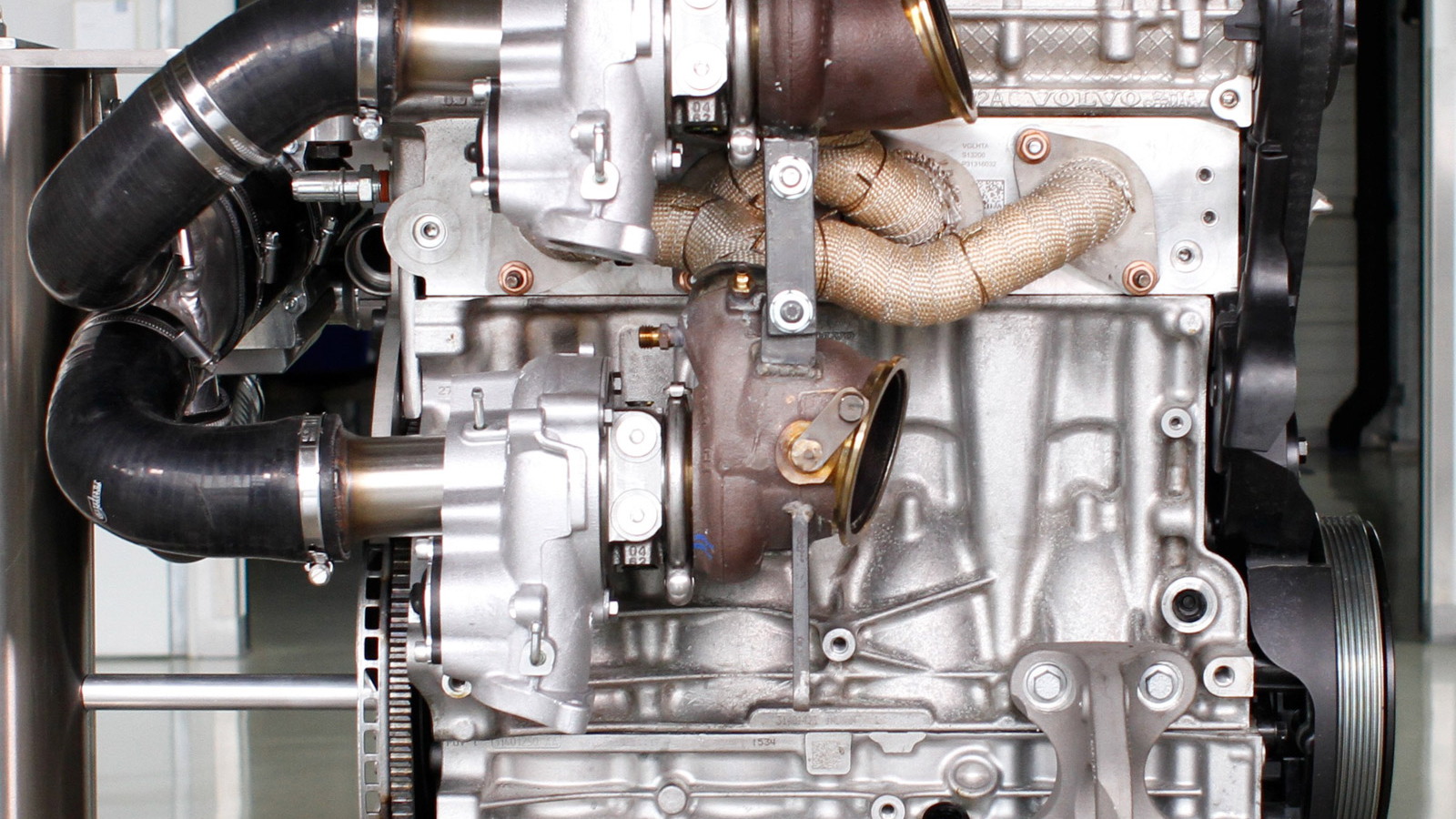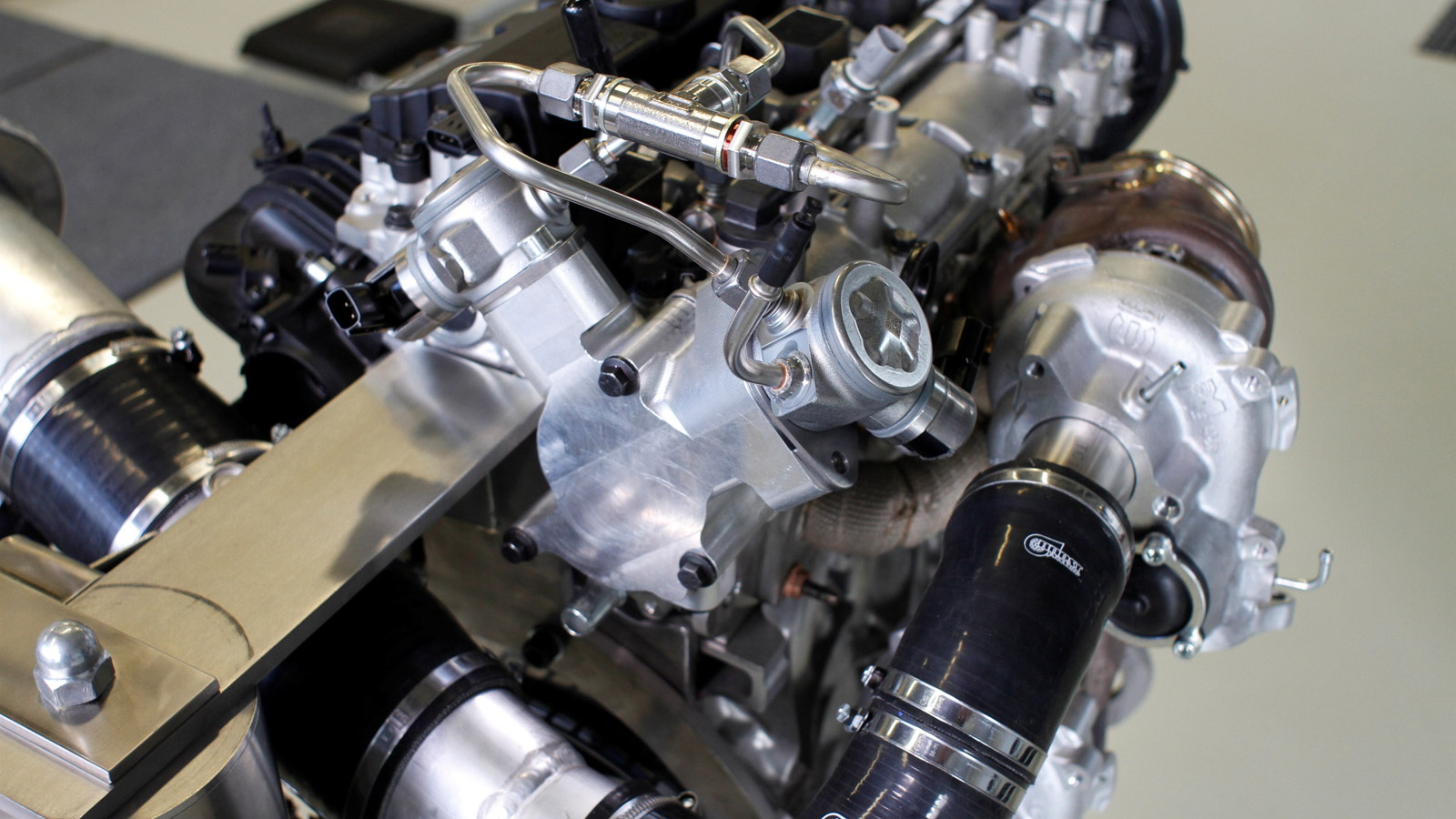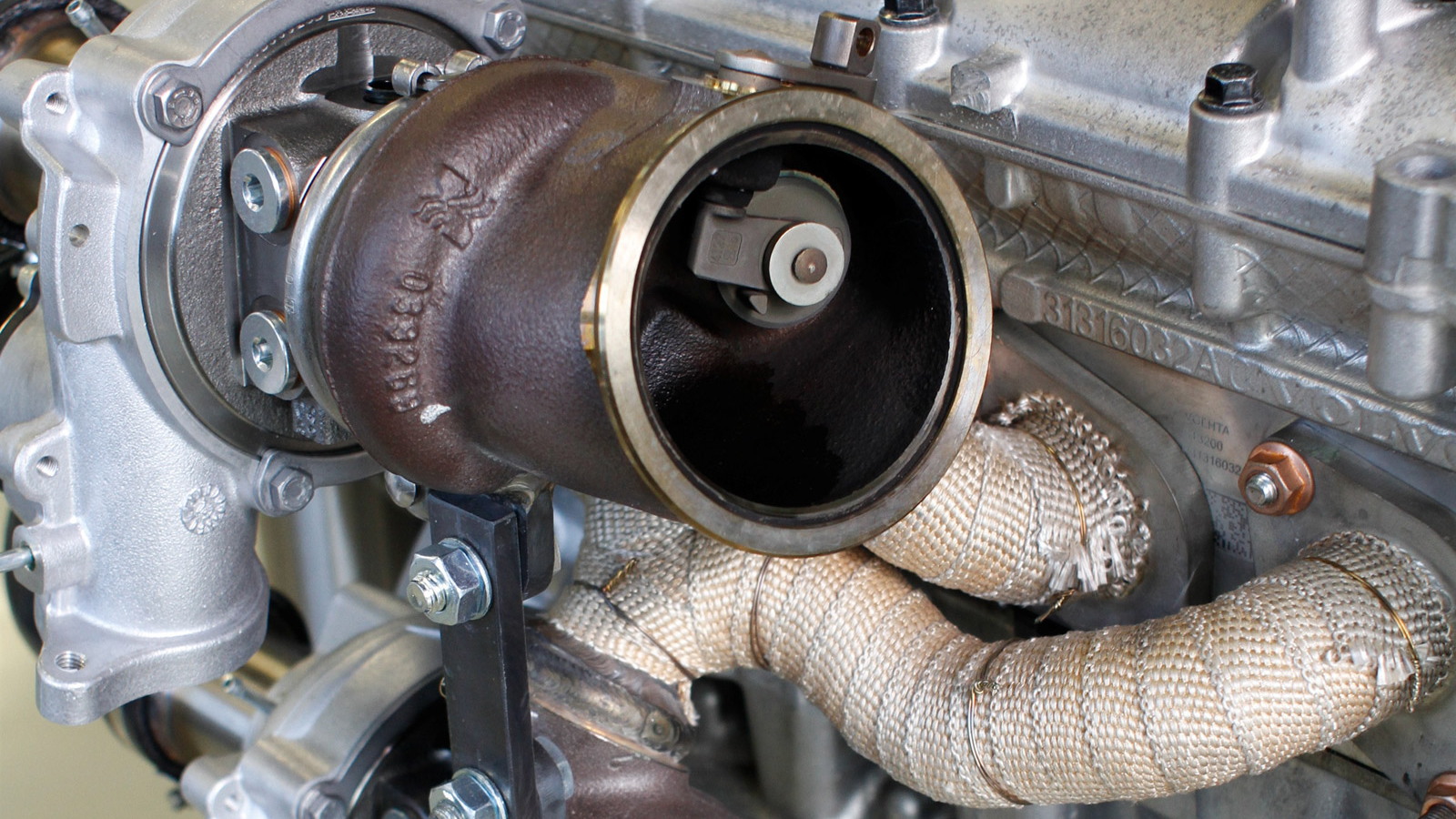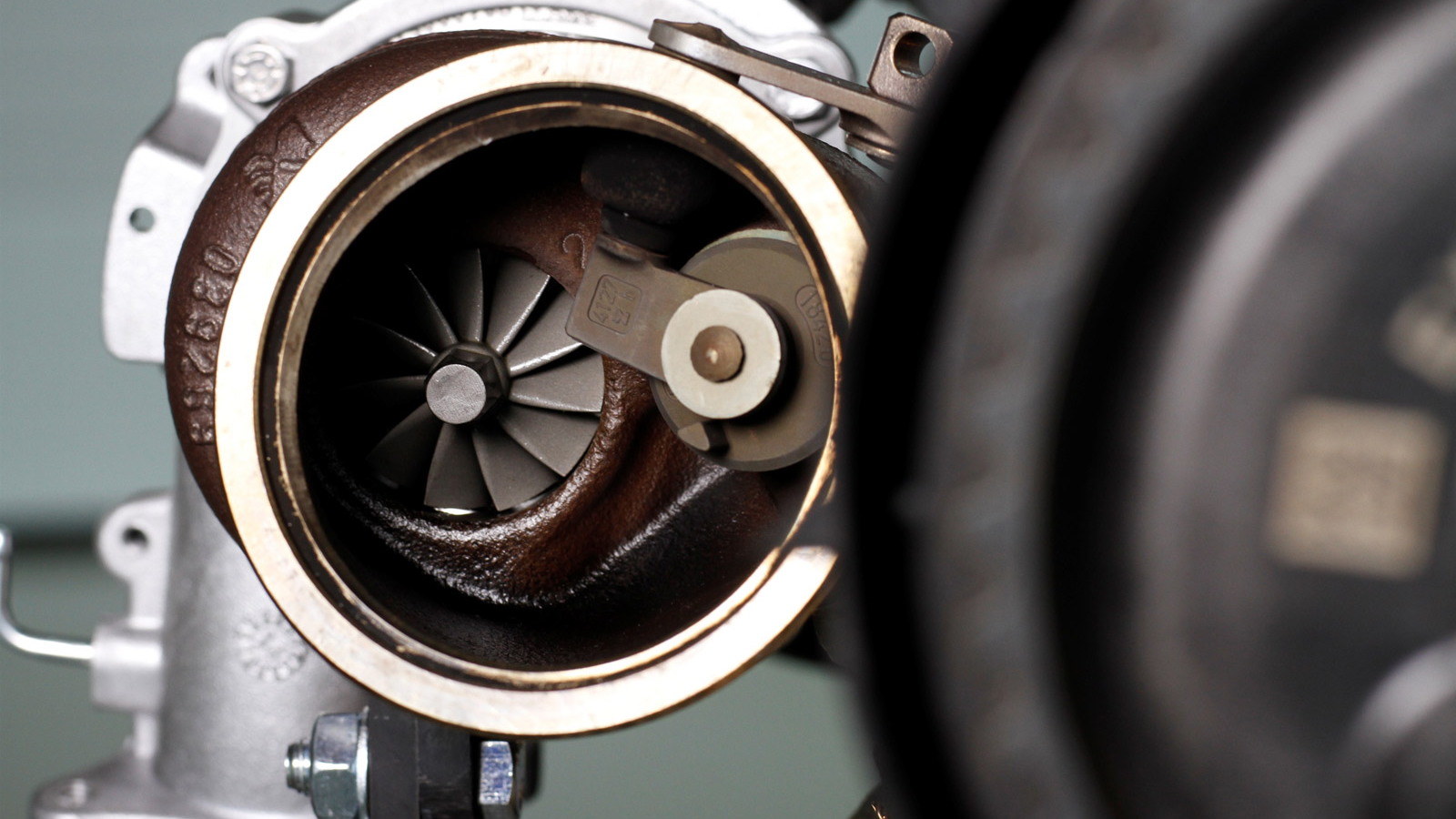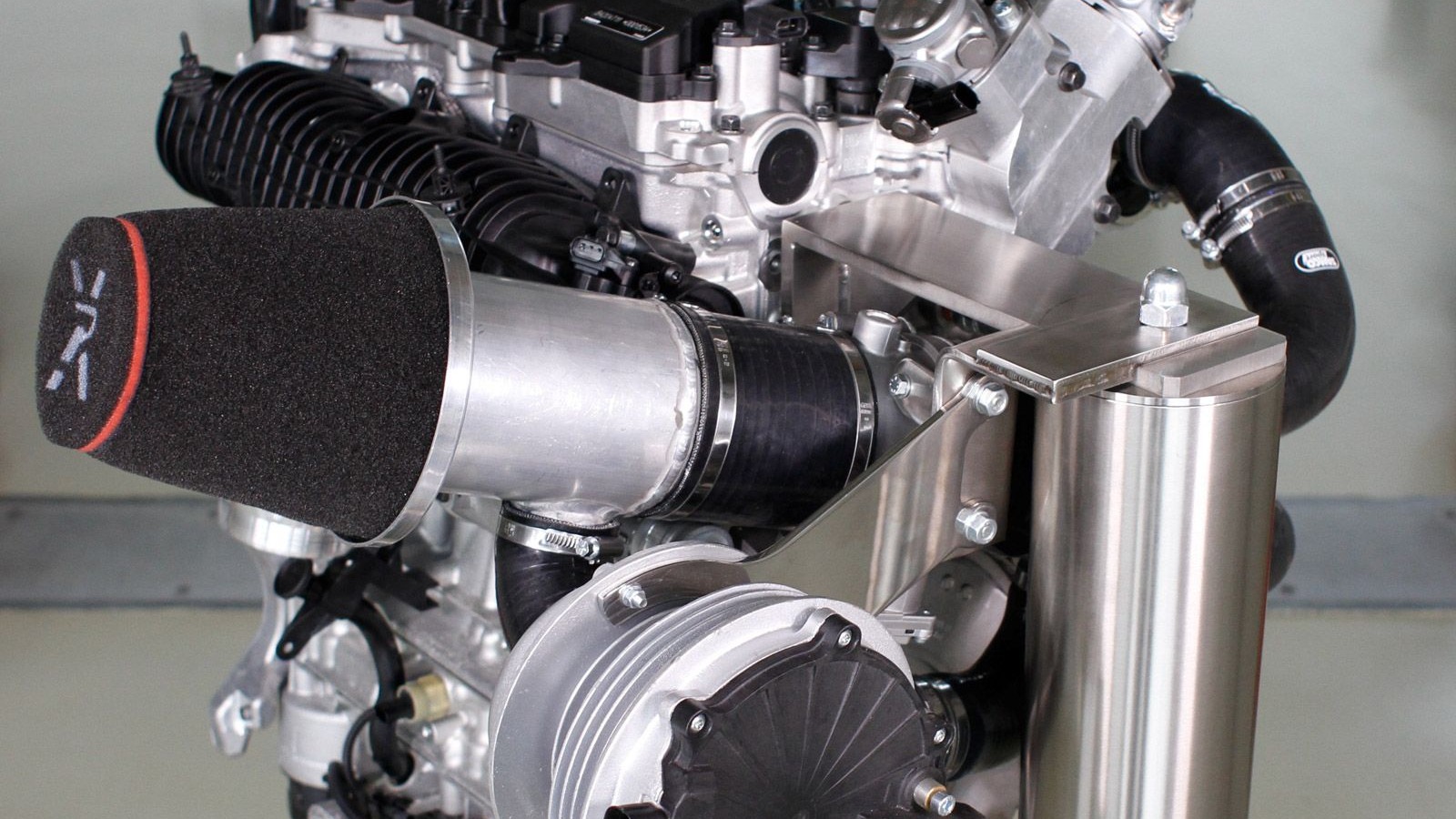Audi recently unveiled a high-performance diesel engine that featured a pair of turbochargers and an electric motor that helps provide boost pressure at low revs. The technology is expected to debut in 2016 in a high-performance version of Audi’s next-generation Q7 SUV and slowly filter across to more models.
Now Volvo has revealed a similar concept, based on a gasoline engine. With its decision to adopt engines with no more than four cylinders, Volvo has been forced to add complex hybrid systems to boost power levels to match outputs of rival manufacturers’ V-8 models. But its new electric-aided turbocharger technology looks to be a simpler—and likely more affordable—alternative.
DON'T MISS: Miniature W-18 Engine Build Is Mesmerizing: Video
Using a 2.0-liter 4-cylinder engine as the starting point, Volvo engineers added a twin-turbocharging system to boost output. But unlike a conventional turbocharger setup that uses wasted exhaust gases to spin its compressor wheel, the turbochargers on Volvo’s new engine spin their compressors using high-pressure air fed from an electrically-driven compressor, in essence making this a triple-charged engine.
Though not mentioned, the electrically-driven compressor is likely utilized at low revs only. Once revs are sufficiently high, the two turbochargers feeding air to the engine likely rely on wasted exhaust gases to keep their compressors spinning, like a conventional turbocharged engine.
But to further boost output, Volvo’s new engine also uses a high-pressure fuel system that pumps fuel into the engine at more than 3,600 psi. Combine this with the charged air from the turbochargers, and you’re looking at a 2.0-liter four-cylinder engine capable of delivering 450 horsepower—without any turbo lag!
At present, the engine is still in the concept phase but Volvo is working closely with suppliers as well as its performance arm Polestar to further develop the technology.
“When we launched the Drive-E powertrain family, our aim was to deliver the most advanced four-cylinder engines in the industry based on emissions and fuel consumption relative to performance and drivability,” Volvo R&D chief Peter Mertens said. “The 450-hp high-performance Drive-E powertrain concept demonstrates this ambition and the versatility of the Drive-E powertrains.
_______________________________________
